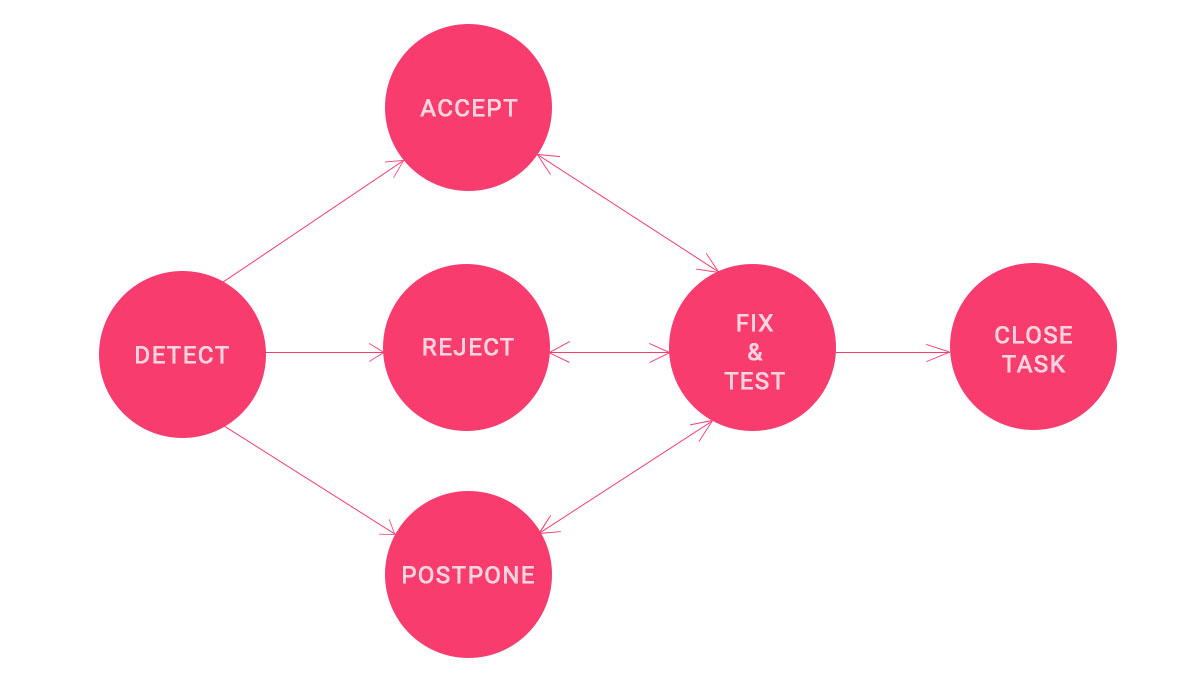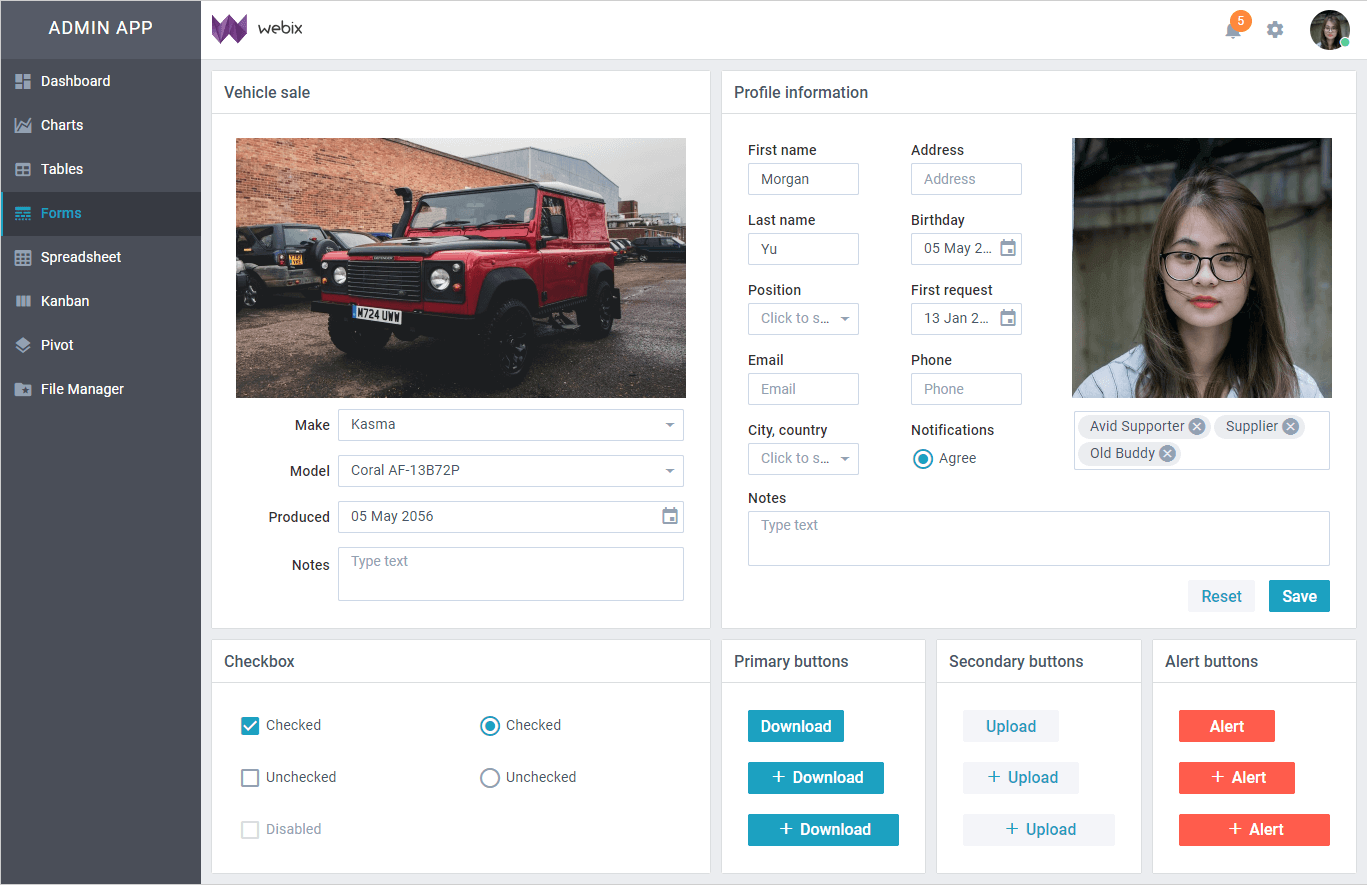Summary
The article explores what software bugs are, how they emerge, and why they remain a natural part of development — from logical and integration errors to performance or security problems. It reviews the full bug life cycle (detection, prioritization, fixing, retesting), highlights common root causes like miscommunication, poor documentation, or incompatible third-party tools, and underscores the importance of early, continuous testing and experienced QA teams to keep systems stable.
It is impossible to create something at least close to perfection without failing from time to time in the process. After overcoming struggles and having a tough time, the victory is even sweeter than you could imagine. The same feeling takes place throughout software development or when creating a website. Coding is difficult because of all the changes that are constantly happening with programming languages, frameworks, and libraries and because of the unexpected bugs.
Technologies are constantly changing, developers gain new skills, and the custom software development services provided by outsourcing companies evolve as well. As a result, new issues and bugs may occur. That is why it is essential for developers to stand guard over the applications they create. In today’s article, we will take a closer look at what software bugs are and what bug fixing techniques can be used during the full life cycle software testing phase. We will also cover the differences between types of software bugs, look at where bugs can come from, and how much your company might pay for the software testing and QA services when you need help throughout the development process.
What Is a Software Bug and Bug Life Cycle?
Bug-free application is a dream of any developer, which is why different software testing methodologies exist. They are deeply rooted in project management and follow such approaches as Waterfall, Agile, and more. There is a wide variety of techniques that are intended to help you find the maximum number of bugs possible to ensure proper and stable work of a solution so that it reaches the customers successfully. In order to understand how to deal with bugs and see the reasons for their appearance, it is important to start with the definition of a bug in software.
A software bug is basically an error in a system that is causing incorrect functionality and can even make your product impossible to use. Any unusual behavior or invalid output that was not intended in the beginning of the coding is the consequence of such an anomaly. These defects are usually human-made. But, there are also sudden cases when, for example, something happens with the hardware and an unpredictable shutdown can affect the functionality of a project.
Read Also There’s No Such Thing as Too Much Testing. What’s DAST and How it Helps Improve Security
A software bug undergoes several stages from detecting it by a tester to eliminating it and ensuring that it won’t happen again. This process is known as bug life cycle, and it includes several phases.

- Detection
First of all, a bug should be found and reported. It can be detected by a developer, QA tester, or by a user. Whether it comes from your team member or mentioned in a customer’s feedback, it has to be noted.
- Acceptance
The next step is not just to accept that there is some error in a system, it is vital to check if this is a new occurrence or if it was already mentioned by someone else earlier.
- Rejection
This is an alternative course of action when the bug is known to developers. It can be rejected because of several reasons. For example, the bug is already fixed or this is an expected behavior. In such cases, there is no need to include it in any defect metrics.
- Postponement
Each bug has its own priority, and those with the low priority can sometimes be delayed and fixed in the future product updates.
- Fix and Test
Throughout this stage a bug simply should be eliminated and tested to check if it can be repeated. The testing period can take some time, because it is vital to find all possible errors that are responsible for the incorrect functioning. After this step, there are a couple of actions that can be done. The bug can successfully be fixed, verified, and closed, or the task can be reopened with suitable comments on what needs to be further done. Thus, the cycle can begin again.
Different Types of Software Bugs
When facing the bugs, you need to know that there is a wide variety of software bugs. Let’s look at the most common ones in order to know what you can run into:
- Logical
This is one of the most popular types of software bugs, and it is caused due to coding errors. These bugs make the software give wrong output, and the logic of the code functions the unexpected way. Usually, they can be easily avoided by doing code walk-throughs and peer reviews.
- Functional
This is the type of an error when an entire application or its certain feature is not functioning properly. For example, you click a button and nothing happens or your software is not working at all. These are functional defects.
- Performance
If talking about this type of error, it is the one that leads to performance issues, such as higher resource consumption, slower speed, increased response time, and others. Thus, if the speed of loading an application is increased, you need to look for a performance bug.
- Compatibility
Compatibility bugs occur when your software is not compatible with the operating system or hardware. This error is not so common, because developers prevent this situation from happening when they decide on which frameworks and programming languages to work with at the start of the development process.
- Integration
When the integration between multiple modules and systems takes place, a developer should be ready for the integration bugs to happen. There could be some kind of data mismatch, data alteration, or other ways of how the data from one module was consumed by the other during the integration testing.
- Security
Security bugs are the most crucial ones out of all other types of software bugs, because they affect the safety of user data, financial data, and other critical information. These defects can affect not only the user’s overall experience but the reputation of your company as well. That is why it is important to classify these bugs as high priority.
There are even more types of bugs that can be found throughout development and after you release your project, so it is vital not to omit the testing stage and keep the quality assurance specialists within arm’s reach.
Where Are the Bugs Coming from and How to Deal with Them?
If you want to avoid any defect in your software or at least minimize the bugs, you need to know how to find bugs in software and where to even look for them. To know how to act, let’s look at which factors can cause bugs.
One of the common reasons why a bug can occur is when the development team or testing team that is working on a project includes members who have low level of expertise or are incompetent. In order to prevent issues in this case, project managers have to ensure that the experience level of developers and testers is suitable to the difficulty of a project. It means that it’s better to include Junior specialists into the easier projects and get help from vendors that offer IT staff augmentation services to enlarge your in-house team with seasoned professionals when your product requires in-depth participation and hard tasks.
The communication and effective collaboration between teams and stakeholders is vital during any of the development stages. The better understanding of what each participant has to do, the closer your software will be to success. Misinterpretation of requirements, unclear goals, and disconnected tasks lead to failure, chaos, and complex workflow management. That is why all needs should be stated at the beginning of development, and any vital detail should be mentioned right away.
![]()
Case study: Simple Task and Bug Tracking System
Having documentation that is easy to understand and easy to follow is a key to success. If the code hasn’t been well documented, there is a high chance that software bugs won’t keep you waiting. Every effort should be documented properly, especially if the code is overly complex. Thus, other developers will have clear instructions of what needs to be done and what is the proper way for it.
It may be hard to find the tools and libraries that are compatible with your project if you want to increase the development speed. Incompatible widget or unknown tool can bring disaster to the whole process, so it is important to use the ones that are well-known, have constant updates, and compatible with several operating systems.
If you don’t want to harm your software, you can use our product that gained the trust among our clients from various industries. Webix JavaScript UI library is a multi-widget bug-free solution that helps you to build mobile and desktop web apps compatible with HTML5 and CSS3 and speed up the process. Its widgets can be used in data visualization, data management, layout building, and more, which makes it the best third-party tool that you can utilize in the course of the development stage.

Case study: Webix | JavaScript UI library and Framework for Speeding Up Web Development
These are the most common factors that have influence over the quality of the software development procedure, and a team can face more of them. The requirements may change, time pressure and deadlines, inability to track development and test execution progresses continuously – any of these other reasons can cause bugs to appear.
Cost of Fixing Bugs
If your testing and other teams tried to prevent the occurrence of software bugs, but you run into them nonetheless, it is time to provide required resources for the fix. When you are not planning to hire a dedicated team of developers, it is all up to you how you deal with the issue. And, in this case, you need to be ready in advance and decide how to allocate the available resources during the entire development process. If you want to split responsibilities between the in-house team and outsourcing team, it all depends on the type of the contract you choose.
If you go for the Fixed Price option, usually, you need to be ready to cover the costs for feature bugs throughout the active development and post-production phases, while the vendor will cover the costs caused by other issues unless otherwise stated in the contract. If your deal requires the Time & Material contract, you will have to pay for feature bugs, bad updates, errors of developers’ own doing, and critical production defects during both active and post-production development stages.
Read Also Cannot Decide on the Right Type of Contract? The Answer Can Be Found Easier Than You Think
Conclusions
Software bugs are a part of development. They can be annoying and can cause negative effects on your product and company’s image, but sometimes it is impossible to completely avoid them. That is why it is vital to be prepared, use suitable and trusted development and testing tools, and have seasoned experts under your wing. If your team does everything right, there is a high level of communication and understanding between all stakeholders, then there is nothing to be afraid of. If you want to enlarge your current development or QA team and need help with your project, contact us, and we will be glad to assist you in your journey.